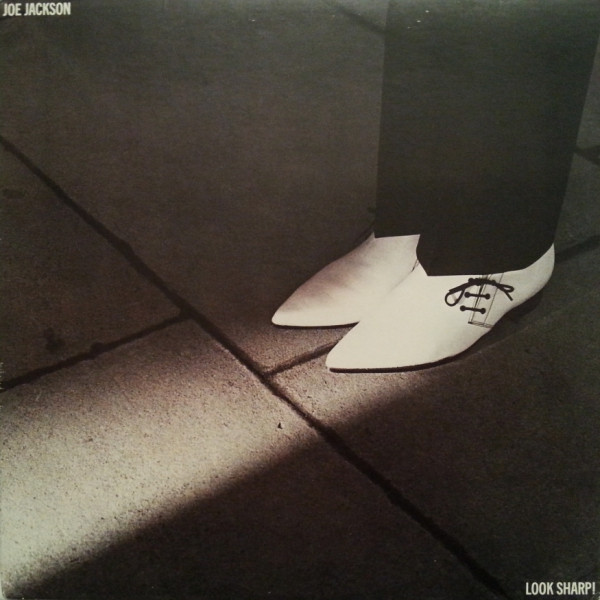
The dark side of the Summer of Love is fittingly exposed on Love’s third album. Universally accepted as their masterpiece,
Forever Changes shows the band continuing to evolve even further. Having dropped Snoopy and the sax player, they were back down to a five-piece, but as various liner notes detail, they were hardly an efficient unit. The non-traditional song titles give one indication of the unrest, while the lyrics bemoan the Vietnam War, and betray the singer’s conviction that he himself is not long for the world.
As ever, Arthur Lee was thoroughly in charge, pushing his bandmates with an iron fist and crooning in a lower register. Perhaps it helped that he played acoustic guitar on most of the tracks, giving the other guys something to follow. He even let Bryan MacLean contribute two songs, the first being the incredible “Alone Again Or”. Beginning with a gentle acoustic picking, it soon alternates with more driving verses, complete with strings and a trumpet straight out of a Tijuana Brass album.
It’s a good way to start the album, since most of the songs that follow are challenging, to say the least, beginning from their titles. “A House Is Not A Motel” is similarly driven by a frantically strummed acoustic, but Johnny Echols gets to add a few leads over lyrics that decry the horror of the war as seen on TV. The deceptively sweet “Andmoreagain” provides something of a respite, its title embellished from the closing track on the debut. Here the image of the girl of the title alternates between saviour and demon. A change comes in “The Daily Planet”, one of the first tracks recorded for the album, and once you hear that drummer supreme Hal Blaine played on this track, it’s nearly impossible to listen without concentrating on him. If, as legend says, the band wasn’t capable of recording this track, it’s a testament to Arthur Lee that he was able to get the arrangement over to the studio cats. He steps aside for Bryan to sing his ode to the “Old Man”, before coming back to paint the picture of chaos in “The Red Telephone”. Here the most vivid lines come at the end: “They’re locking them up today/They’re throwing away the key/I wonder who it will be tomorrow, you or me”; “We’re all normal and we want our freedom”; “all-a God’s chilluns gotta have their freedom”.
For requesting songs on the radio, it couldn’t have been much tougher than asking the deejay to throw on “Maybe The People Would Be The Times Or Between Clark And Hilldale”. It’s a very catchy tune, swathed in trumpets and sporting a unique rhyme scheme where the last word of each verse is implied, only to appear as the first word of the next. “Live And Let Live” is a benign title for a song that starts with the declaration “Oh, the snot has caked against my pants.” Johnny Echols’ closing solo is suitably tense. Much easier listening is “The Good Humor Man He Sees Everything Like This”, with its plucked strings and progressions reminiscent of side one of Da Capo (indeed, the song was started as far back as that). The tranquil mood is jarred by the tape editing at the very end. “Bummer In The Summer” is the shortest song on the album, and one of the straightest, coming just before the grand finale of “You Set The Scene”. Beginning with a sound not unlike the Moody Blues (again), this suite goes through a few distinct sections before slowing down for the meat of the song, wherein despite all the ugliness he’s chronicled for the previous 35 minutes, Arthur finds beauty in living for the moment, and wishing nothing but the best for his fellow travelers.
Forever Changes is not easy listening, and the trumpets and strings place it squarely within the late sixties. But given the chance to sink in, all the different textures start to reveal themselves to combine for a remarkable listening experience. Not bad for a guy yet to see the age of 24. (And while the cover was suitably psychedelic, it’s interesting to note that a proposed alternative would have continued the trend of the first two Love albums.)
Rhino has avidly supported Love since their early days as a label, and they’ve made sure to keep Forever Changes in print to this day. Their expanded CD added a few outtakes and alternate mixes, as well as both sides of the original lineup’s last flop single. Later, the two-disc Collector’s Edition included most of those, plus more tracking sessions and a complete alternate mix of the original album; it’s interesting, in places. For its semi-centennial anniversary, yet another reissue added the mono mix, a few more alternate mixes, a DVD with a high-resolution, and, of course, a vinyl version.
Love Forever Changes (1967)—4½
2001 CD reissue: same as 1967, plus 7 extra tracks
2008 Collector’s Edition: same as 2001, plus 14 extra tracks
2018 50th Anniversary Edition: same as 2008, plus 17 extra tracks








:format(jpeg):mode_rgb():quality(90)/discogs-images/R-6877442-1569261554-6881.jpeg.jpg)